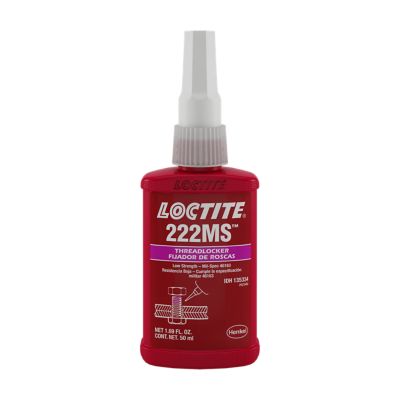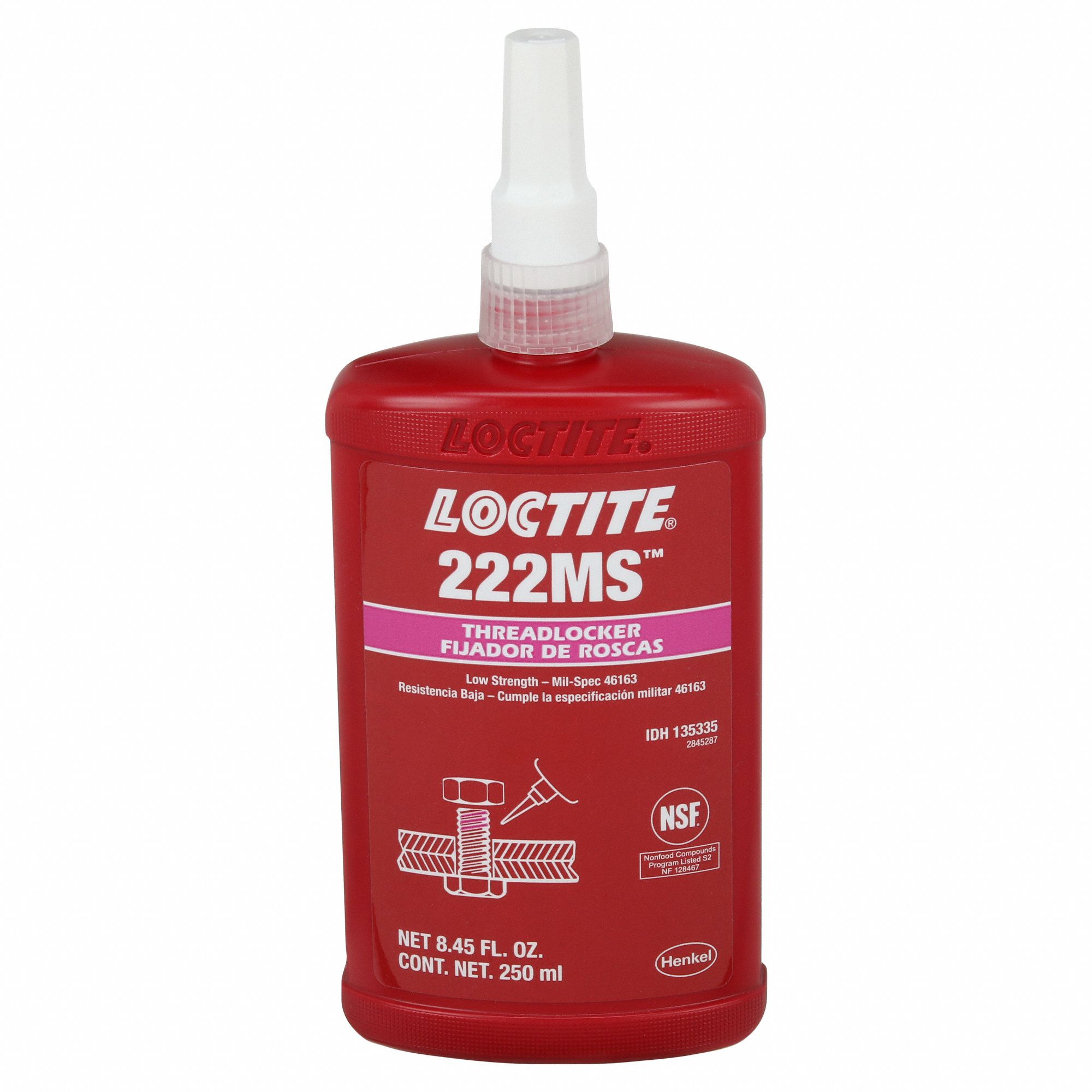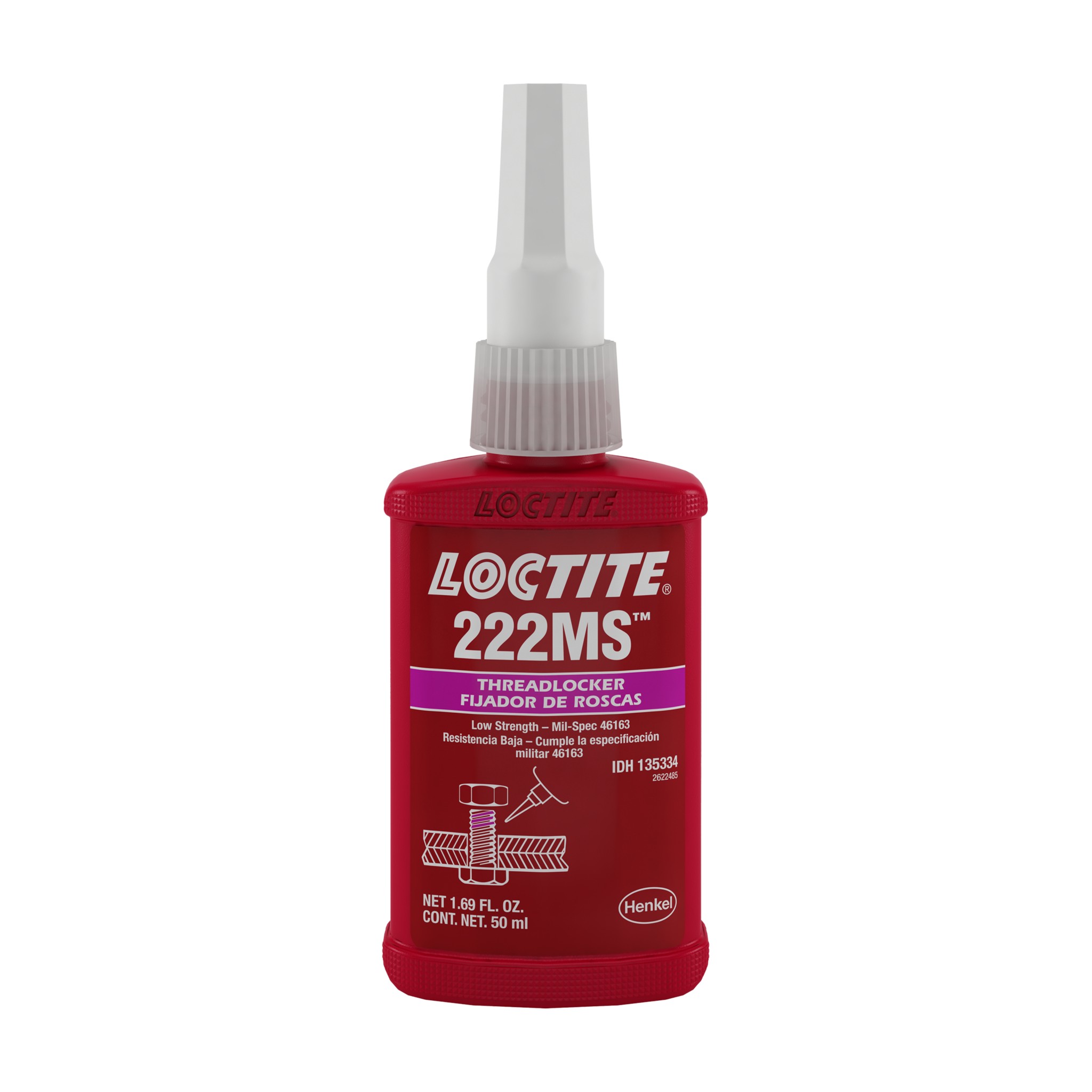Loctite 222 is a threadlocker designed for small screws and Loctite 222Ms is a modified version for faster cure speed and greater temperature resistance. Loctite 222 and Loctite 222Ms are two variants of threadlockers developed by Loctite Corporation.
These products are specifically formulated to provide reliable bonding for small screws and fasteners. While Loctite 222Ms is a modified version of Loctite 222, offering a faster cure speed and increased temperature resistance, both variants serve the same purpose of securing threaded assemblies.
We will explore the similarities and differences between Loctite 222 and Loctite 222Ms, helping you understand which product will best suit your specific requirements.
Contents
Loctite 222 Vs Loctite 222MS
Composition
When it comes to understanding the composition of Loctite 222 and Loctite 222MS, it’s important to delve into the specific ingredients that make up these products. The composition plays a crucial role in determining their effectiveness and application.
Loctite 222 Composition
Loctite 222 is composed of methacrylate ester and polyalkylmethacrylate, providing a reliable and secure bond for small, threaded fasteners.
The composition of Loctite 222 is engineered to prevent fasteners from loosening due to vibration or thermal cycling, ensuring stability and security in various applications.
Loctite 222ms Composition
On the other hand, Loctite 222MS features a similar composition to Loctite 222, containing methacrylate ester and polyalkylmethacrylate.
However, this particular formulation is designed specifically for low-strength metals that cannot withstand the higher curing temperatures required for standard Loctite 222.
This tailored composition allows for versatile use on a range of materials while maintaining the same reliable performance as Loctite 222.

Strength And Performance
The strength and performance of adhesives are crucial factors to consider when choosing the right product for a specific application.
In this comparison, we’ll delve into the strengths of Loctite 222 and Loctite 222MS to help you understand their respective capabilities.
Strength Of Loctite 222
Loctite 222 is a low-strength threadlocker designed primarily for small fasteners that are often need disassembly.
It provides a secure seal while still allowing for easy disassembly with standard hand tools, making it an ideal choice for applications that require frequent maintenance.
Strength Of Loctite 222ms
On the other hand, Loctite 222MS is a medium-strength threadlocker. It offers a greater degree of strength and is well-suited for small diameter threads as well as for fasteners that need to withstand vibrations and shock loads. This makes it a preferred choice for applications that demand a higher degree of locking strength.
Applications
Loctite 222 and Loctite 222MS are widely used threadlocking adhesives known for their specialized applications in various industries.
Common Applications Of Loctite 222
- Small fasteners
- Set screws
- Brake caliper bolts
Common Applications Of Loctite 222ms
- High-strength applications
- Preventing loosening due to vibration
- Critical machinery components
Curing Time
Loctite 222 and Loctite 222MS both have a curing time of 24 hours. Loctite 222MS is specifically designed for applications where low-strength threadlocking is required and offers better performance at higher temperatures compared to Loctite 222.
Curing Time Of Loctite 222
The curing time of Loctite 222 is an essential factor to consider when working on projects that require secure and reliable adhesive bonds. This low-strength, purple threadlocker is known for its fast curing properties, enabling quick assembly and reduced downtime.
Loctite 222’s curing time is remarkably short, allowing you to move on to the next steps of your project swiftly. Within just one hour, Loctite 222 reaches its handling strength, meaning that you can securely handle and manipulate the objects you’ve assembled.
This rapid curing time minimizes the risk of accidental movement or dislodging of components as you proceed with your work. After achieving handling strength, Loctite 222 continues to cure over time, gradually strengthening its bond.
Within 24 hours, the adhesive reaches its full cure, ensuring a durable and lasting connection. However, it’s important to note that the curing time can be influenced by environmental factors such as humidity and temperature, so it’s best to follow the manufacturer’s guidelines for optimal results.
Curing Time Of Loctite 222ms
Loctite 222MS is a modified formula of the original Loctite 222, specially designed for use on metals. Just like its counterpart, Loctite 222MS offers fast curing capabilities for quick and efficient assembly. When it comes to its curing time, you can expect similar performance to Loctite 222.
Within one hour, Loctite 222MS achieves handling strength, allowing you to proceed with confidence knowing that your assembled components are secure. The fast curing time of Loctite 222MS makes it an excellent choice for projects with tight deadlines or a need for immediate handling.
Like Loctite 222, Loctite 222MS takes approximately 24 hours to fully cure, providing a dependable and long-lasting bond. However, it’s crucial to consider the specific environmental conditions that might impact the curing rate, ensuring that the adhesive achieves its optimal strength.
Overall, both Loctite 222 and Loctite 222MS deliver quick curing times, enabling efficient assembly and reducing downtime. Their ability to reach handling strength within one hour makes them valuable tools for various applications. Whether you’re working on delicate electronics or sturdy metal structures, these threadlockers deliver the fast and reliable bonding solutions you need.
Temperature Resistance
Loctite 222 and Loctite 222MS offer excellent temperature resistance for reliable bonding in extreme conditions.
Both products ensure durable and long-lasting performance, making them ideal for demanding applications where temperature fluctuations are a concern.
These adhesives provide a strong and dependable bond even in high-temperature environments, ensuring secure fastening and assembly.
Temperature Resistance Of Loctite 222
One crucial factor to consider when choosing a thread locker is its temperature resistance. In the case of Loctite 222, this compact, low-strength adhesive performs admirably in a wide range of temperature conditions.
Loctite 222 offers a commendable operating temperature range of -55°C to +150°C, making it suitable for various applications. This remarkable temperature resistance ensures that the bond created by Loctite 222 remains secure and reliable, even in extreme temperature environments.
Whether you’re working in a freezing cold industrial facility or dealing with hot machinery, you can count on Loctite 222 to maintain its effectiveness and durability. Its ability to withstand such a broad temperature range makes it a versatile choice for professionals across different industries.
Temperature Resistance Of Loctite 222ms
Loctite 222MS is a slightly different variant of the original Loctite 222, specifically designed for enhanced temperature resistance. This specialized adhesive excels in situations where high temperature stability is required.
Unlike Loctite 222, the Loctite 222MS offers an astonishing operating temperature range of -65°C to +230°C. This expanded range allows for reliable bonding in extreme thermal conditions that may be experienced in automotive, aerospace, or manufacturing applications.
Whether it’s exposed to extreme cold or intense heat, Loctite 222MS remains steadfast and reliable. Its superior temperature resistance ensures that the bond formed by this adhesive remains intact, providing peace of mind for professionals working in critical environments.
When choosing between Loctite 222 and Loctite 222MS, it’s essential to consider the specific temperature requirements of your application. While both adhesives exhibit impressive temperature resistance, Loctite 222MS offers a higher range if you need to tackle extremely hot conditions.
| Loctite Product | Temperature Resistance |
|---|---|
| Loctite 222 | -55°C to +150°C |
| Loctite 222MS | -65°C to +230°C |
Temperature Resistance ComparisonLoctite 222-55°C to +150°CLoctite 222MS-65°C to +230°C
Ultimately, understanding the temperature resistance of Loctite 222 and Loctite 222MS allows you to make an informed decision based on your specific needs. Both adhesives deliver remarkable performance, keeping your assemblies secure and robust in diverse temperature conditions.
Removability
Loctite 222 and Loctite 222Ms are both adhesives known for their removability. These products offer strong bonding capabilities while still allowing for easy disassembly, making them ideal for applications that may require future repairs or adjustments.
Removability Of Loctite 222
Loctite 222: Can be removed using standard hand tools such as wrenches or pliers.
Key Points:
- Easy removal with basic tools
- Suitable for components that may need occasional adjustment
Removability Of Loctite 222ms
Loctite 222MS: Offers low-strength but still applies immediately and requires no curing time.
Key Points:
- Can be manually disassembled without heat or special tools
- Perfect for applications where regular maintenance or repairs are needed

Frequently Asked Questions On Loctite 222 Vs Loctite 222ms
What Is Loctite 222ms Used For?
Loctite 222MS is used for locking and sealing small screws and nuts to prevent loosening.
What Is The Cure Time For Loctite 222ms?
The cure time for Loctite 222MS is 24 hours at room temperature. After that, the bond strength will continue to improve for up to 72 hours.
Is Loctite 222 Strong?
Yes, Loctite 222 is strong. It’s a low-strength threadlocker designed for small screw applications.
Which Loctite Is The Strongest?
Loctite 638 is the strongest, with high strength for bonding metal surfaces in industrial applications.
Conclusion
After comparing Loctite 222 and Loctite 222Ms, it’s evident that both offer strong adhesive properties. While Loctite 222 is ideal for general use, Loctite 222Ms is specially formulated for metals.
Consider the specific needs of your project to choose the most suitable option for optimal results.

